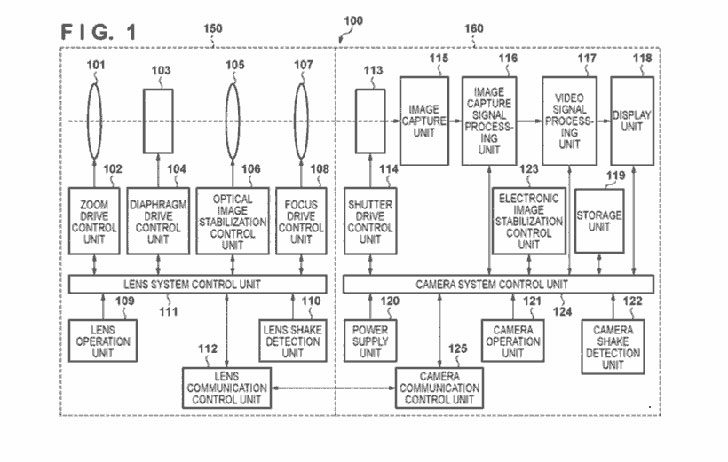Northlight has uncovered a patent application concerning improved images stabilization, especially in wider lenses. The patent includes both in lens image stabilization and electronic stabilization.
There is a reference to in body stabilization in this patent as well.
From US Patent 20180213155:
Note that the second image stabilization is not limited to electronic image stabilization, and may be, for example, image stabilization performed by controlling a mechanical movement of the image capturing device, or image stabilization performed by controlling a movable optical element in the camera body
We are asked fairly often if we see IBIS coming to Canon cameras, and I think it'll happen one day.
Some of our articles may include affiliate links. If you purchase through these links, we may earn an affiliate commission at no extra cost to you.


For all Canon's protestations that in long telephotos (long been Canon's mainstay reputation) the in-lens stabilisation is superior, the fact is that Olympus and Panasonic have shown that combining in-lens and IBIS is better still.
Canon is correct, in-lens IS is far, far superior to IBIS for telephotos. Indeed, Olympus and Panasonic had to go over to in-lens IS when they started promoting telephotos (300/4, 100-400/6.3). It was a subsequent development that they started combining the IBIS with IS. And it is still the fact that the in-lens is the major component of the combined stabilization of the telephotos. For example, the much lauded Pana Leica 200/2.8 has 4.3 stops of IS on an Olympus body, where it can't sync with the IBIS, which is increased by just 1.2 stops on a Panasonic where it does sync.
https://www.lenstip.com/521.3-Lens_review-Panasonic_Leica_DG_Elmarit_200_mm_f_2.8_POWER_O.I.S._Build_quality_and_image_stabilization.html
The new Canon 70-200mm f/4 IS II has 5 stops of in-lens IS by itself.
It's not IBIS like you're thinking. Since the video is a crop of the full sensor, Canon essentially uses the extra pixels to imitate a stabilized sensor by shifting the active pixels.
Yes, it is the same kind of stabilization you can get in post in FCP X, for example. My 6D2 will also do the same kind of thing. You have to have stabilization turned on in the lens, if it has it, as well as enabling the software in the camera. I don't think the 6D2 crops for video otherwise. The handheld video I took of basketball this summer looked very stable even though I wasn't being very careful as I shot.
Getting a patent does NOT mean that you have freedom to operate. If there is a broader patent covering your subject matter that is owned by someone else, you have to license their patent or you can't use your own without being sued.
The reason companies get patents for more specific things is to inhibit the freedom to operate by the broad patent holder since they would need a license to use that specific thing even though they hold the broad patent. Doing this allows you to block your competitors from using their own IP in the best possible way.
I know people get confused about this, you can own something but you can't use it if someone else has a superseding claim over it.
I have tracked down how it works in: https://www.imaging-resource.com/news/2018/04/01/canon-cpplus-2018-mirrorless-strategy-development-focus-dual-sensing-tech
It adds information from the motion of the image detected on the sensor to that detected by the gyros in the lens to calculate the IS in the lens. In other words, all the stabilization is done by the IS in the lens but it is guided both by the gyros and the sensor, but mainly the gyros.